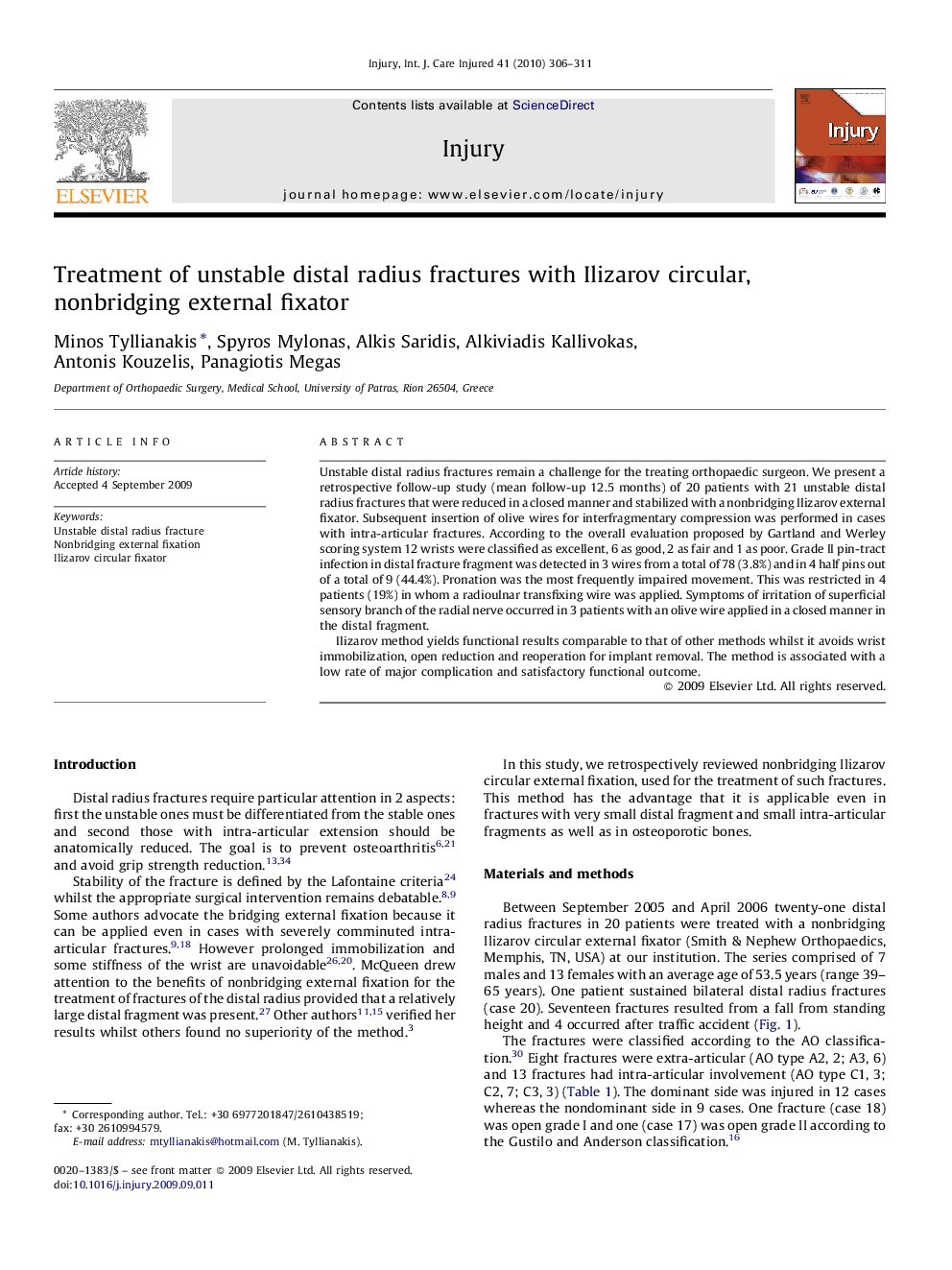| Article ID | Journal | Published Year | Pages | File Type |
|---|---|---|---|---|
| 3241836 | Injury | 2010 | 6 Pages |
Unstable distal radius fractures remain a challenge for the treating orthopaedic surgeon. We present a retrospective follow-up study (mean follow-up 12.5 months) of 20 patients with 21 unstable distal radius fractures that were reduced in a closed manner and stabilized with a nonbridging Ilizarov external fixator. Subsequent insertion of olive wires for interfragmentary compression was performed in cases with intra-articular fractures. According to the overall evaluation proposed by Gartland and Werley scoring system 12 wrists were classified as excellent, 6 as good, 2 as fair and 1 as poor. Grade II pin-tract infection in distal fracture fragment was detected in 3 wires from a total of 78 (3.8%) and in 4 half pins out of a total of 9 (44.4%). Pronation was the most frequently impaired movement. This was restricted in 4 patients (19%) in whom a radioulnar transfixing wire was applied. Symptoms of irritation of superficial sensory branch of the radial nerve occurred in 3 patients with an olive wire applied in a closed manner in the distal fragment.Ilizarov method yields functional results comparable to that of other methods whilst it avoids wrist immobilization, open reduction and reoperation for implant removal. The method is associated with a low rate of major complication and satisfactory functional outcome.
